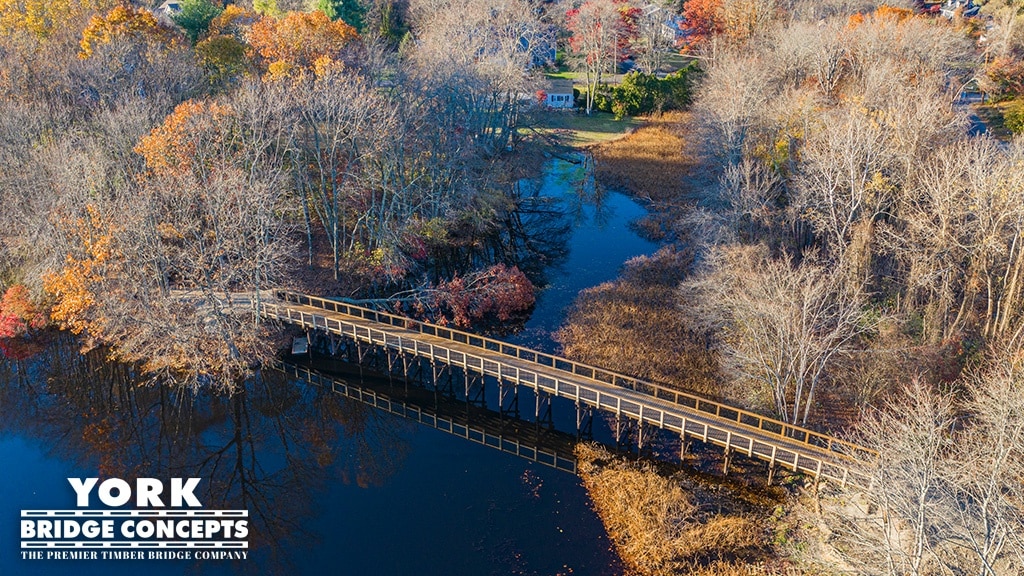A Massachusetts Trail Bridge That Honors Nature
Sudbury Inlet Pedestrian Trail Bridge
Bridging the balance between community access and environmental preservation, the Sudbury Inlet Pedestrian Trail Bridge in Ashland, Massachusetts, exemplifies the art and intention behind York Bridge Concepts' legacy in eco-friendly bridge construction. This custom-designed, eco-friendly bridge was crafted with precision by YBC's Decero™ Design Studio, aligning seamlessly with the scenic trailway system that meanders through the Sudbury Inlet--a sensitive ecological corridor teeming with biodiversity and natural beauty.
This Legacy Series bridge not only connects trail users across water, but also connects the values of sustainability, craftsmanship, and thoughtful design in one compelling structure. From material selection to construction method, every detail was chosen with the local ecosystem in mind--resulting in a Massachusetts trail bridge that feels like it's always been there.
Specifications
- Width:
- 8'10" (8'6" clear)
- Length:
- 170'
- Height:
- 15' above grade
- Capacity:
- 90 PSF
- Construction:
- Deck Level
- Span Type:
- Repetitive Span
- Material:
- CA-C Treated Southern Yellow Pine
- Foundation:
- Timber Piles & Abutments (Acrylic/Polymer Coated where exposed)
- Stringers:
- SYP S4S Timber (Acrylic/Polymer Coated where exposed)
- Deck System:
- 1-½” Composite Deck
- Handrail:
- Decero™ Metal Picket Design Series
- Crossing:
- Pond
A Purpose-Driven Trail Bridge for Ashland's Outdoor Community
Tucked within the vibrant landscape of Ashland, the Sudbury Inlet is more than just a body of water. It's a vital component of the region's watershed system, hosting native plant and animal species that contribute to the area's ecological richness. When the town sought to enhance connectivity through its natural corridors, a traditional construction method would not suffice.
York Bridge Concepts was chosen for our proven expertise in environmentally sensitive crossings, particularly in ecologically delicate zones such as inlets, wetlands, and riparian buffers. With Ashland's goal to expand its trail infrastructure while preserving the inlet's natural character, the solution had to be as thoughtful as it was strong.
Enter the Sudbury Inlet Pedestrian Trail Bridge--a signature expression of sustainable design and eco-friendly engineering, brough to life through our process.
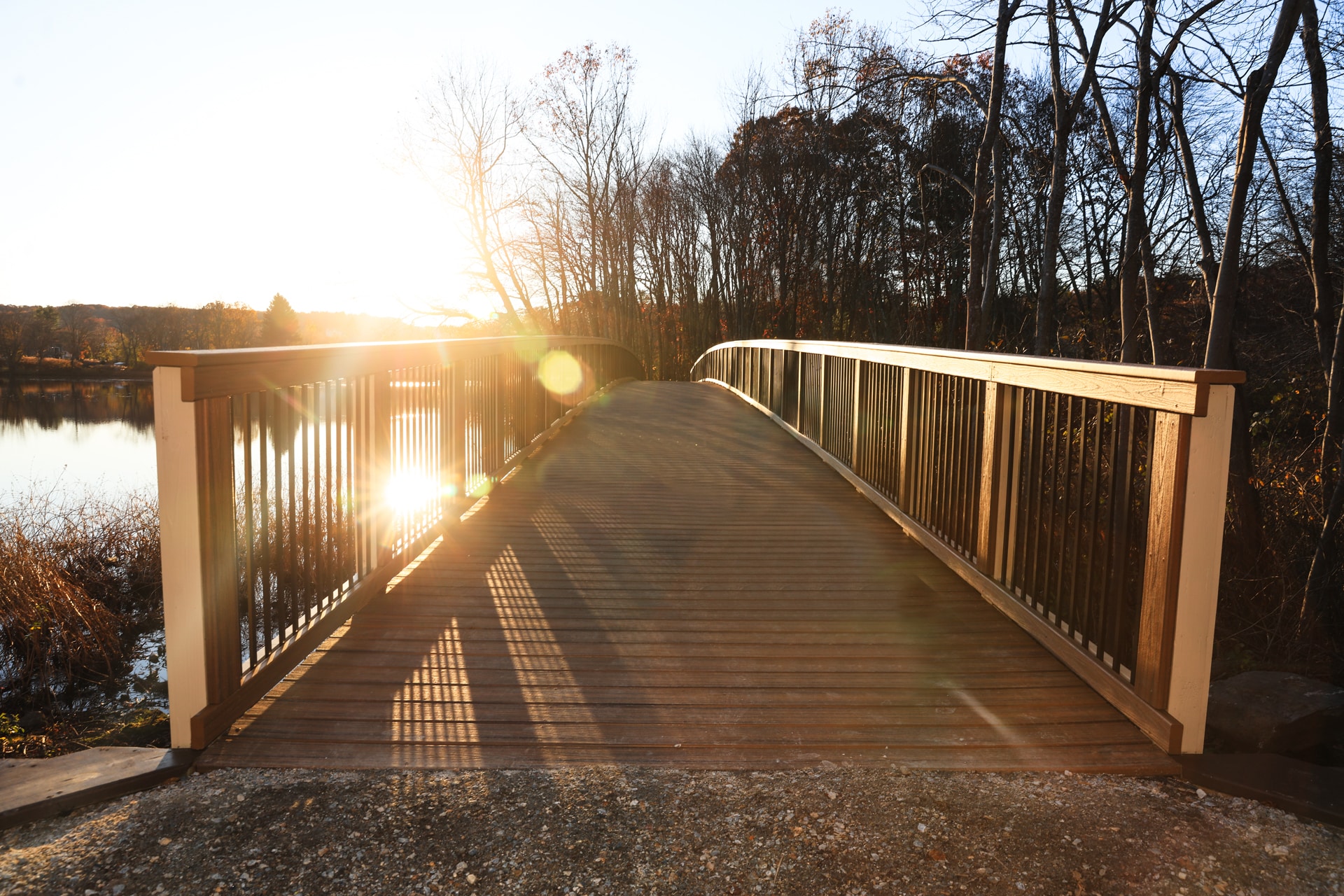
Designing With Intention: The Legacy Series Approach
At the core of every York Bridge Concepts project is our commitment to context-driven design. For the Sudbury Inlet project, that meant crafting a bridge that:
- Blends with the natural trail environment
- Minimizes ecological disruption
- Supports long-term trail use and accessibility
- Showcases architectural harmony with natural surroundings.
Our Legacy Series Bridges are known for their timeless beauty, high-performance finishes, and lasting resilience. In Ashland, the Decero™ Design Studio Team applied these hallmarks to create a trail bridge that looked less like an addition to the landscape and more like a continuation of it.
The open rail system allows visitors to enjoy sweeping views of the inlet, while the warm tones of the treated timber mirror the palette of surrounding trees, marshland, and water. The bridge's profile design further supports the idea that great infrastructure should serve its purpose without overpowering its environment.
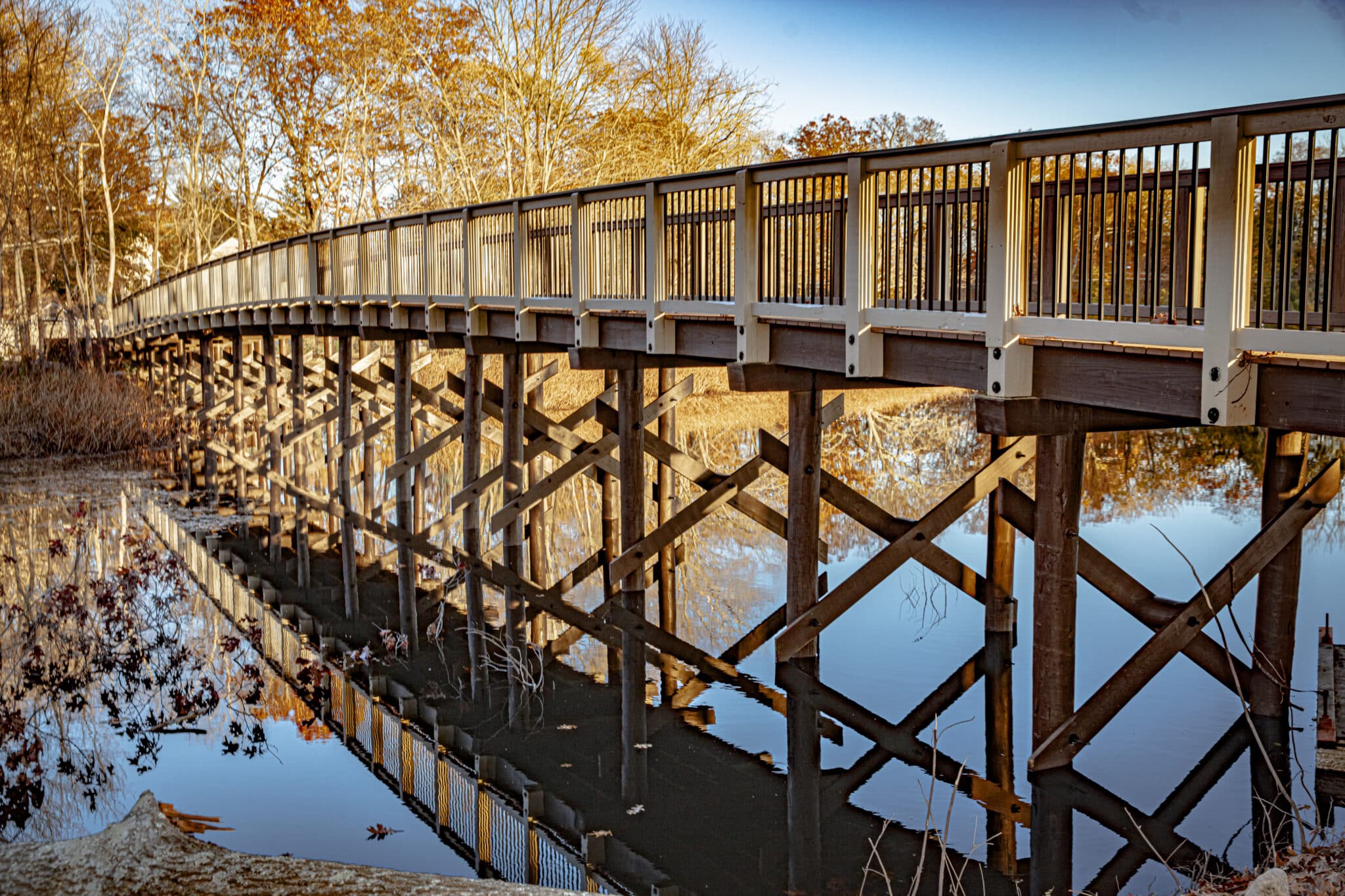
Eco-Friendly From The Start: Sustainable Deck-Level Construction
One of the most critical aspects of this project was how it was built. Traditional construction methods often require heavy equipment that can damage terrain and disrupt ecosystems. But York Bridge Concepts approaches each sensitive crossing with a unique construction methodology: Sustainable Deck-Level Construction.
This technique allowed our crews to build the Sudbury Inlet Pedestrian Trail Bridge form the top down, eliminating the need to disturb soils or create access roads through the fragile inlet area. No heavy machinery entered the waterway. No unnecessary grading occurred. And most importantly, the inlet was protected--before, during, and after construction.
By working from the bridge deck itself and employing precision-aligned components, our team was able to preserve the inlet's vegetation and hydrologic flow--an essential factor in preserving the health of the Sudbury watershed.

Connecting The Trailway System With Purpose
The town of Ashland and local trail groups had a vision: to improve public access to natural areas while protecting the resources that make those spaces so valuable. The Sudbury Inlet bridge is a critical piece of that puzzle. It enables hikers, birdwatchers, cyclists, and families to explore more of their community without cutting off or degrading sensitive natural areas.
Now fully integrated into the town's broader trailway system, the bridge functions as a gateway to discovery--a moment where people are invited to pause, look out over the water, and feel connected not just to place, but to purpose.
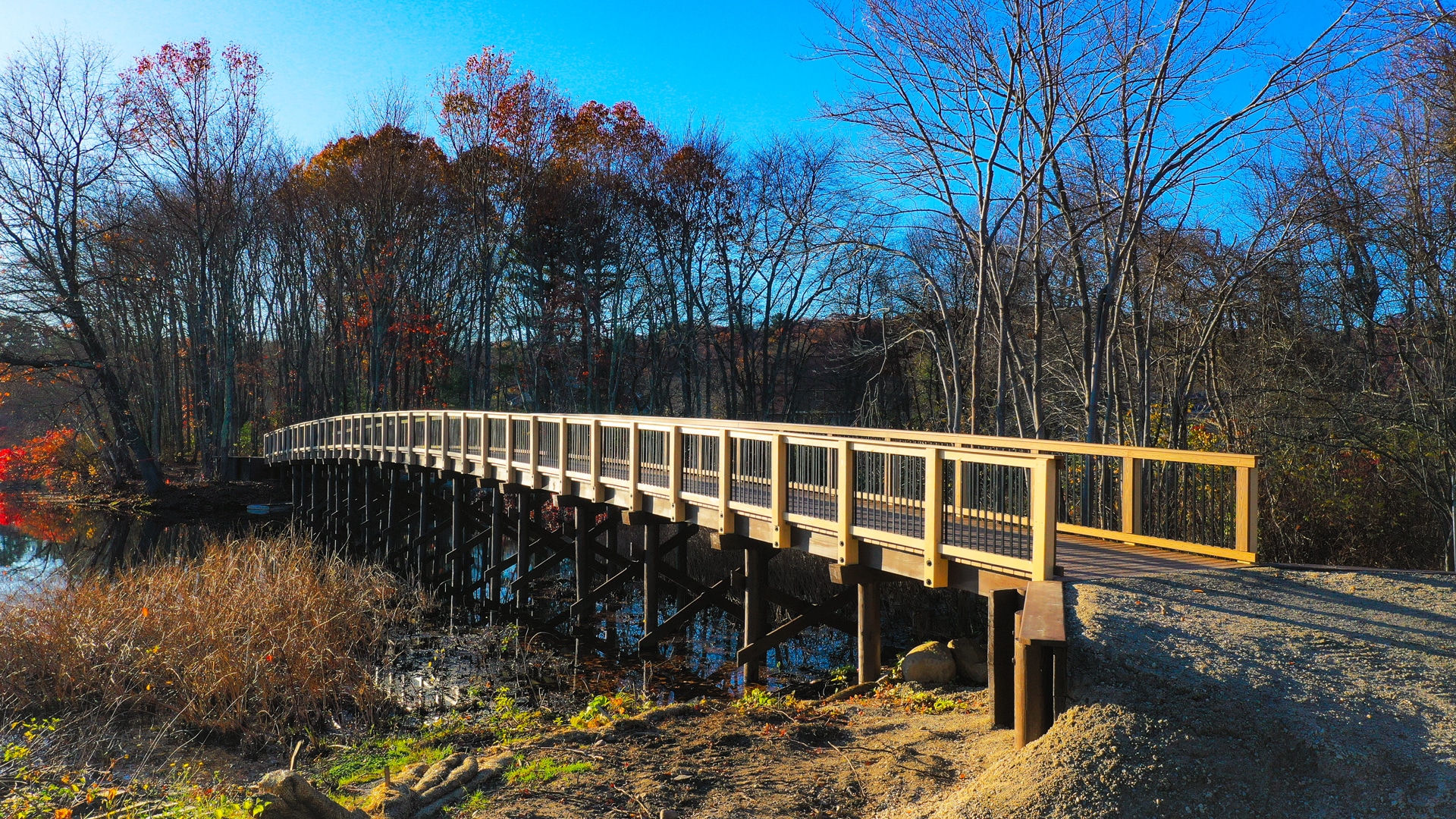
materials That Match The Vision
Choosing wood for this Massachusetts trail bridge wasn't just about aesthetics--it was about sustainability. Timber is one of the few renewable building materials with the capacity to sequester carbon throughout its life cycle. When sourced responsibly and treated for longevity, it provides a durable, environmentally sound solution for outdoor infrastructure.
For the Sudbury Inlet bridge, we selected pressure-treated, sustainably sources Southern Yellow Pine--an ideal species known for strength and resilience in high-moisture environments. Each timber was hand-selected and treated with environmentally friendly coatings that resist rot, UC damage, and insect activity, along with composite materials, ensuring the bridge remains beautiful and structurally sound for generations.
Additionally, we utilized weather-resistant stainless steel fasteners and galvanized hardware that complement the natural look while adding modern performance. It's part of our commitment to ensure every element of our bridges--from structural components to decorative details--supports long-term durability and visual elegance.

Legacy That Lasts: The Human and Environmental impact
The success of the Sudbury Inlet project can be measured in more than just feet and spans. It's seen in how locals use the trail every day. How children look through the railing to peer into the inlet. How the water flows unobstructed beneath, feeding native plants and giving sanctuary to migratory birds.
It's also seen in how future infrastructure projects might follow this example--proving that it's possible to build bridges that last without sacrificing the environments we build them in.
Ashland's embrace of environmentally responsible infrastructure speaks volumes about its values as a community. By choosing York Bridge Concepts, the town ensured those values were reflected in every beam, joint, and handrail.
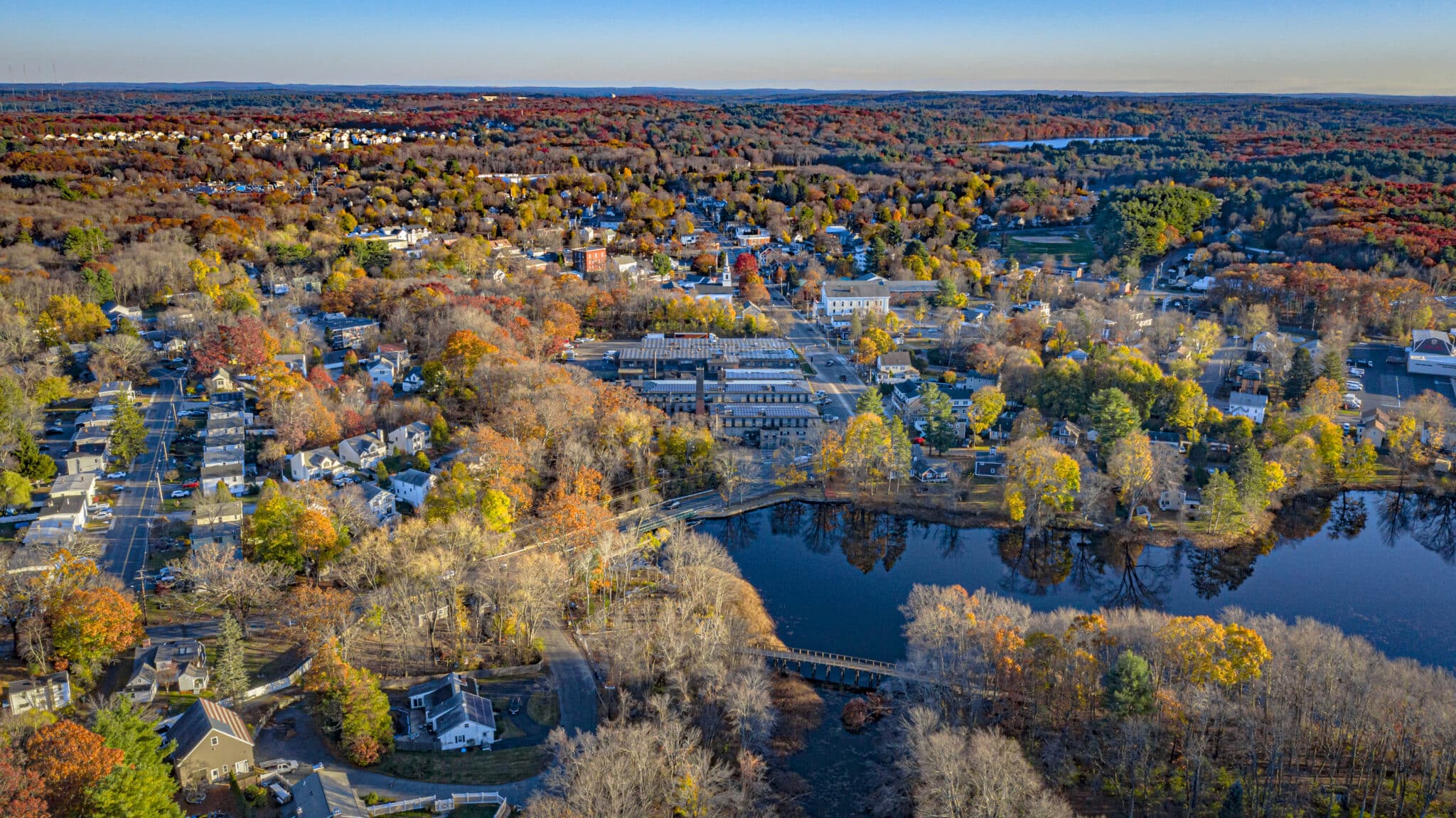
Bringing Our Expertise To More Communities
From coastal wetlands in the Carolinas to the riverfront parks of the Northeast, York Bridge Concepts has built its reputation on delivering sustainable bridges that align with nature, not fight it. The Sudbury Inlet bridge is yet another example of what's possible when a community, a trail, and a vision come together with the right partner.
Whether it's for a single span across a nature preserve or a full system of trails and crossings, YBC is ready to help towns and cities across the country bring the country bring their sustainable infrastructure goals to life.
In summary: Where Form Meets Function, and Both Meet Nature
The Sudbury Inlet Pedestrian Trail Bridge is more than a path across water--it's a testament to what's possible when design, craftsmanship, and ecological integrity converge. As Massachusetts continues to invest in green infrastructure and recreational access, this trail bridge will serve as a beacon of what future-forward, environmentally conscious design can look like.
York Bridge Concepts is proud to be part of this legacy, and we look forward to building more bridges that do more than connect land--they connect people to place, and progress to preservation.
All Feature Projects
What's Best: A Culvert Or A Timber Bridge?
What Is The Best Span Type For My Project?
Which Load Capacity I Need?
How Do I Cross An Environmentally Sensitive Area?
How Do I Create A Landmark?
How Long Does A Timber Bridge Last?
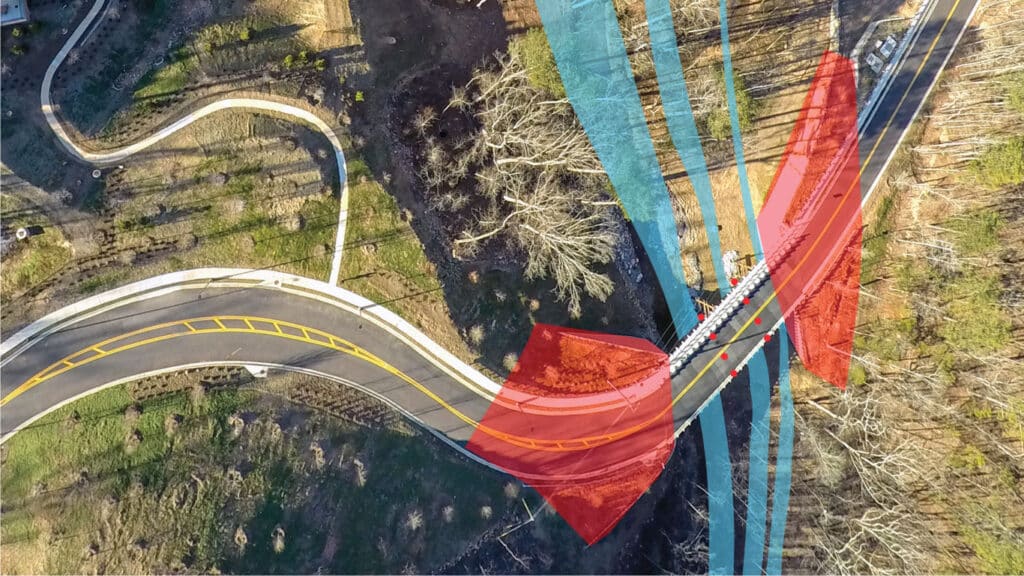
Culvert Or Bridge
If you're considering using a culvert for your crossing project. Click below to understand the best fit for your project.

Spanning Solutions
Spanning a crossing is one of the most important aspects of your crossing project. Find the best solution for your crossing needs.
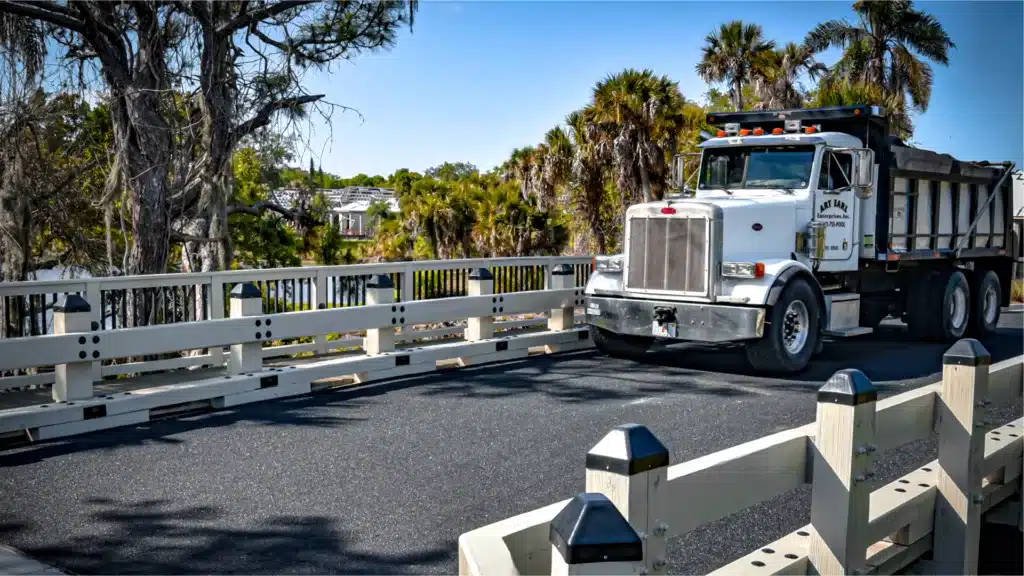
Uses & Capacities
The load capacity of a timber bridge may surprise you. See specs for different loads and uses that will help your decision-making process.

